Today in our series on film star photographers two French brothers, Henri Manuel (1874-1947) and Gaston Manuel (1880-1967). Between the two World wars, their studio G. L. Manuel Frères portrayed 'tout' Paris: Auguste Rodin, Mistinguett, Eric Satie, Josephine Baker, Aristide Bruant, Colette, Jules Renard, Yvonne Printemps et cetera.
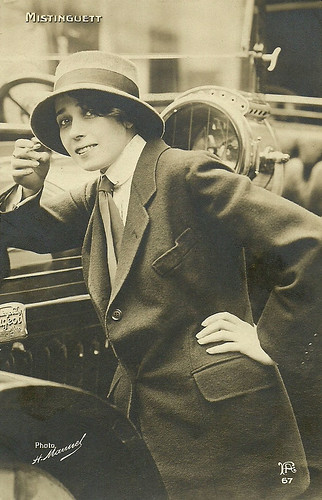
Mistinguett. French postcard by FA, no. 67. Photo: H. Manuel. Collection: Didier Hanson.
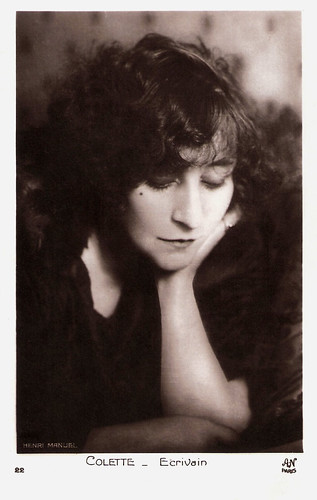
French novelist and performer Sidonie-Gabrielle Colette. French postcard by A.N. Paris, no. 22. Photo: Henri Manuel.
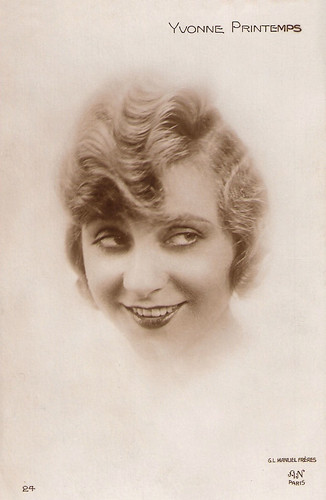
Yvonne Printemps. French postcard by Editions A.N., Paris, no. 24. Photo: G.L. Manuel Frères.
Henri Manuel was born in Paris in 1874. His brother Gaston was six years younger and born in 1880, also in the French capital.
In 1900, the two brothers opened their portrait studio in Paris, G. L. Manuel Frères (Gaston Lucien Manuel Brothers)
They specialised in portrait photography. Henri Manuel quickly became renowned as a photographer of people from the worlds of politics, art and sports, as well as a photographer of art and architecture.
Notable authors they portrayed include Tristan Bernard, Jean Cocteau, Colette, Sacha Guitry, Paul Morand, and Marcel Pagnol. Other figures include Louis Barthou, prime minister of France in 1913; Georges Clemenceau, statesman and twice prime minister; Marshal of France Ferdinand Foch, allied supreme commander in World War I; Vicomtesse Marie-Laure de Noailles; and Raymond Poincar president of France from 1913 to 1920.
Henri also produced postcards of dancers and actresses from the music halls and casinos and his name is sometimes appended to Reutlinger postcards, indicating there was a collaboration of some form.
Soon his portraits were used by news agencies, and in 1910 Manuel's studio began providing a commercial service to news agencies for photographs known as 'l’Agence universelle de reportage Henri Manuel'.
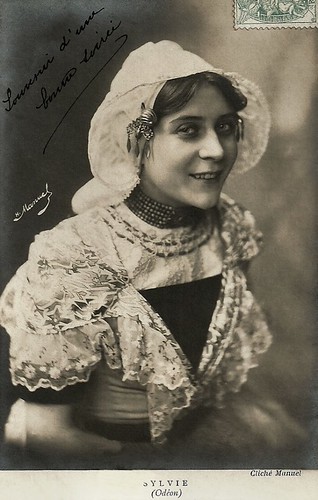
Sylvie. French postcard. Photo: Manuel. The caption goes: 'Souvenir d'un bonne soirée' (Memory of a nice night). On the verso lines from the play Vieil Heidelberg.
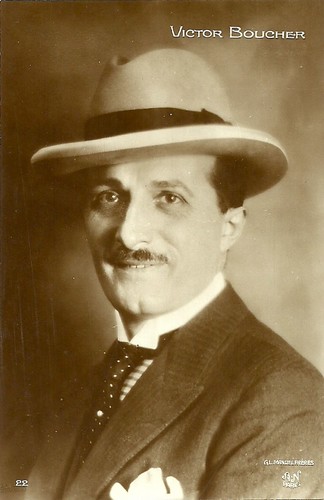
Victor Boucher. French postcard by A.N., Paris, no. 22. Photo G.L. Manuel Frères.
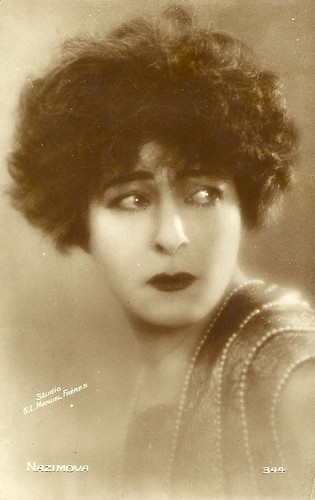
Nazimova. French postcard, no. 344. Photo: Studio G.L. Manuel Frères. Collection: Didier Hanson.
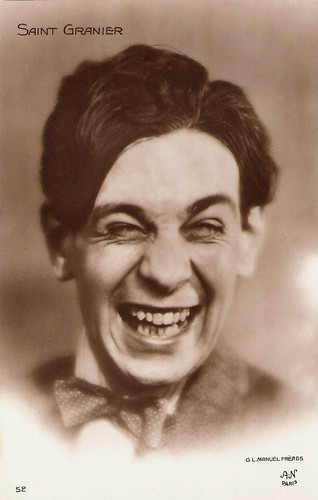
Saint-Granier. French postcard by A.N., Paris, no. 52. Photo: G.L. Manuel Frères.
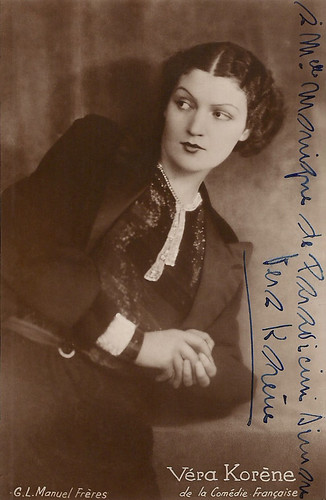
Vera Korène. French postcard. Photo: G.L. Manuel Frères. Collection: Didier Hanson.
From 1914 till 1944, Henri Manuel served as the official photographer of the French government. Manuel also produced numerous photo reports during official ceremonies.
The studio became the largest photographic studio in Paris and a leading centre where young aspiring photographers such as Paris-based American photographer Thérèse Bonney might go to work.
In 1925, the brothers moved their business to 27 rue du Faubourg in Montmartre, where they expanded their business into fashion photography for the likes of Chanel, Patou, Poiret and Lanvin.
Manuel worked for thirty fashion magazines and especially for La Femme de France (1922-1935), Les Grandes Modes de Paris (1906-1931), Les Modes de la femme de France (1922-1935), and Le Petit Écho de la mode (1928-1936).
Between 1928 and 1932, Henri Manuel was also the remarkable witness of the Clairvaux prison. He took 132 shots of Clairvaux which give a striking image of the French prison system in the first half of the twentieth century. He photographed the naked reality of imprisonment, labour, discipline for the hundreds of prisoners but also the environment of their guards.
By 1941 the studio had produced over a million images, spread between fashion photographs, news agency photographs, personal portraits and other images.
The studio was sequestered during the Second World War, and the majority of the photographic plates have been destroyed after 1945.
Some 600 plates survived and were purchased by the state in 1988. They are held at the photo archive of the Médiathèque de l’architecture et du patrimoine.
Henri Manuel was married with Rachel Camille Meyer. He died in 1947 in Neuilly-sur-Seine. Gaston died in 1967.
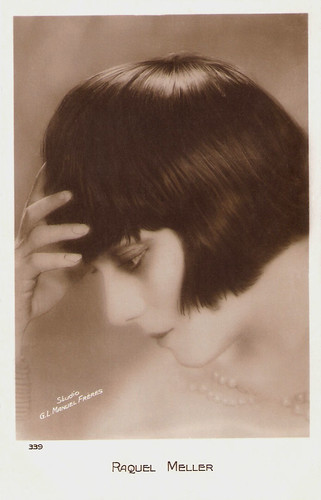
Raquel Meller. French postcard by Cinémagazine Edition, no. 339. Photo: G.L. Manuel Frères.
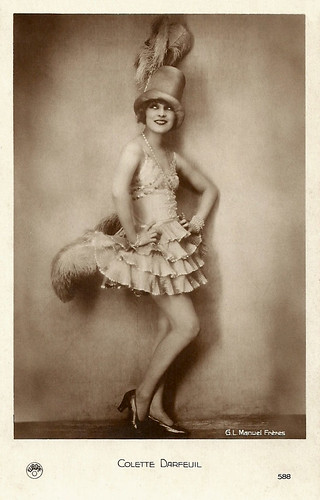
Colette Darfeuil. French postcard by Europe, no. 588. Photo: G.L. Manuel Frères.
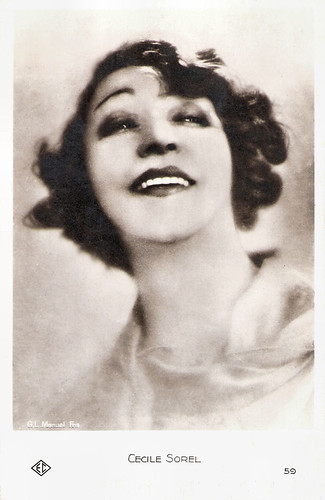
Cécile Sorel. French postcard by E.C. (Editions Chantal), Paris, no. 59. Photo: G.L. Manuel Frères, Paris.
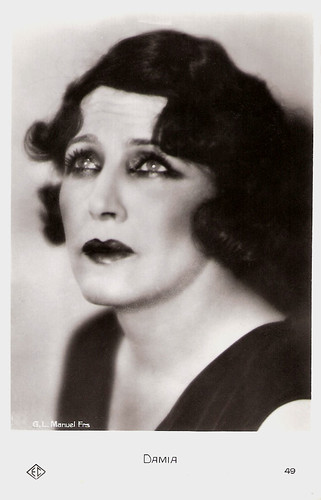
Damia. French postcard by Editions Chantal (EC), no. 49. Photo: G.L. Manuel Frères.
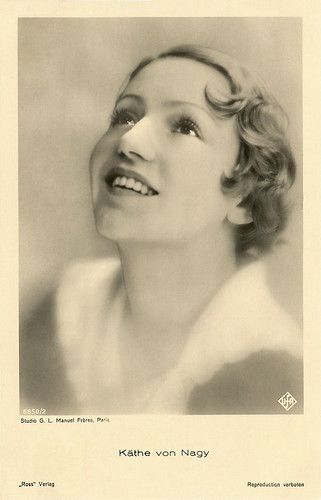
Käthe von Nagy. German postcard by Ross Verlag, no. 6850/2, 1931-1932. Photo: G.L. Manuel Frères, Paris / Ufa. Collection: Didier Hanson.
Check out our other posts on film star photographers. See the links at right under the caption 'The Photographers'.
Sources: Médiathèque de l’architecture et du patrimoine (French), L'Est Eclair (French), John Toohey (Luminous Lint), Wikipedia (English and French).

Mistinguett. French postcard by FA, no. 67. Photo: H. Manuel. Collection: Didier Hanson.

French novelist and performer Sidonie-Gabrielle Colette. French postcard by A.N. Paris, no. 22. Photo: Henri Manuel.

Yvonne Printemps. French postcard by Editions A.N., Paris, no. 24. Photo: G.L. Manuel Frères.
Dancers and actresses from the music halls and casinos
Henri Manuel was born in Paris in 1874. His brother Gaston was six years younger and born in 1880, also in the French capital.
In 1900, the two brothers opened their portrait studio in Paris, G. L. Manuel Frères (Gaston Lucien Manuel Brothers)
They specialised in portrait photography. Henri Manuel quickly became renowned as a photographer of people from the worlds of politics, art and sports, as well as a photographer of art and architecture.
Notable authors they portrayed include Tristan Bernard, Jean Cocteau, Colette, Sacha Guitry, Paul Morand, and Marcel Pagnol. Other figures include Louis Barthou, prime minister of France in 1913; Georges Clemenceau, statesman and twice prime minister; Marshal of France Ferdinand Foch, allied supreme commander in World War I; Vicomtesse Marie-Laure de Noailles; and Raymond Poincar president of France from 1913 to 1920.
Henri also produced postcards of dancers and actresses from the music halls and casinos and his name is sometimes appended to Reutlinger postcards, indicating there was a collaboration of some form.
Soon his portraits were used by news agencies, and in 1910 Manuel's studio began providing a commercial service to news agencies for photographs known as 'l’Agence universelle de reportage Henri Manuel'.

Sylvie. French postcard. Photo: Manuel. The caption goes: 'Souvenir d'un bonne soirée' (Memory of a nice night). On the verso lines from the play Vieil Heidelberg.

Victor Boucher. French postcard by A.N., Paris, no. 22. Photo G.L. Manuel Frères.

Nazimova. French postcard, no. 344. Photo: Studio G.L. Manuel Frères. Collection: Didier Hanson.

Saint-Granier. French postcard by A.N., Paris, no. 52. Photo: G.L. Manuel Frères.

Vera Korène. French postcard. Photo: G.L. Manuel Frères. Collection: Didier Hanson.
The naked reality of imprisonment
From 1914 till 1944, Henri Manuel served as the official photographer of the French government. Manuel also produced numerous photo reports during official ceremonies.
The studio became the largest photographic studio in Paris and a leading centre where young aspiring photographers such as Paris-based American photographer Thérèse Bonney might go to work.
In 1925, the brothers moved their business to 27 rue du Faubourg in Montmartre, where they expanded their business into fashion photography for the likes of Chanel, Patou, Poiret and Lanvin.
Manuel worked for thirty fashion magazines and especially for La Femme de France (1922-1935), Les Grandes Modes de Paris (1906-1931), Les Modes de la femme de France (1922-1935), and Le Petit Écho de la mode (1928-1936).
Between 1928 and 1932, Henri Manuel was also the remarkable witness of the Clairvaux prison. He took 132 shots of Clairvaux which give a striking image of the French prison system in the first half of the twentieth century. He photographed the naked reality of imprisonment, labour, discipline for the hundreds of prisoners but also the environment of their guards.
By 1941 the studio had produced over a million images, spread between fashion photographs, news agency photographs, personal portraits and other images.
The studio was sequestered during the Second World War, and the majority of the photographic plates have been destroyed after 1945.
Some 600 plates survived and were purchased by the state in 1988. They are held at the photo archive of the Médiathèque de l’architecture et du patrimoine.
Henri Manuel was married with Rachel Camille Meyer. He died in 1947 in Neuilly-sur-Seine. Gaston died in 1967.

Raquel Meller. French postcard by Cinémagazine Edition, no. 339. Photo: G.L. Manuel Frères.

Colette Darfeuil. French postcard by Europe, no. 588. Photo: G.L. Manuel Frères.

Cécile Sorel. French postcard by E.C. (Editions Chantal), Paris, no. 59. Photo: G.L. Manuel Frères, Paris.

Damia. French postcard by Editions Chantal (EC), no. 49. Photo: G.L. Manuel Frères.

Käthe von Nagy. German postcard by Ross Verlag, no. 6850/2, 1931-1932. Photo: G.L. Manuel Frères, Paris / Ufa. Collection: Didier Hanson.
Check out our other posts on film star photographers. See the links at right under the caption 'The Photographers'.
Sources: Médiathèque de l’architecture et du patrimoine (French), L'Est Eclair (French), John Toohey (Luminous Lint), Wikipedia (English and French).
No comments:
Post a Comment